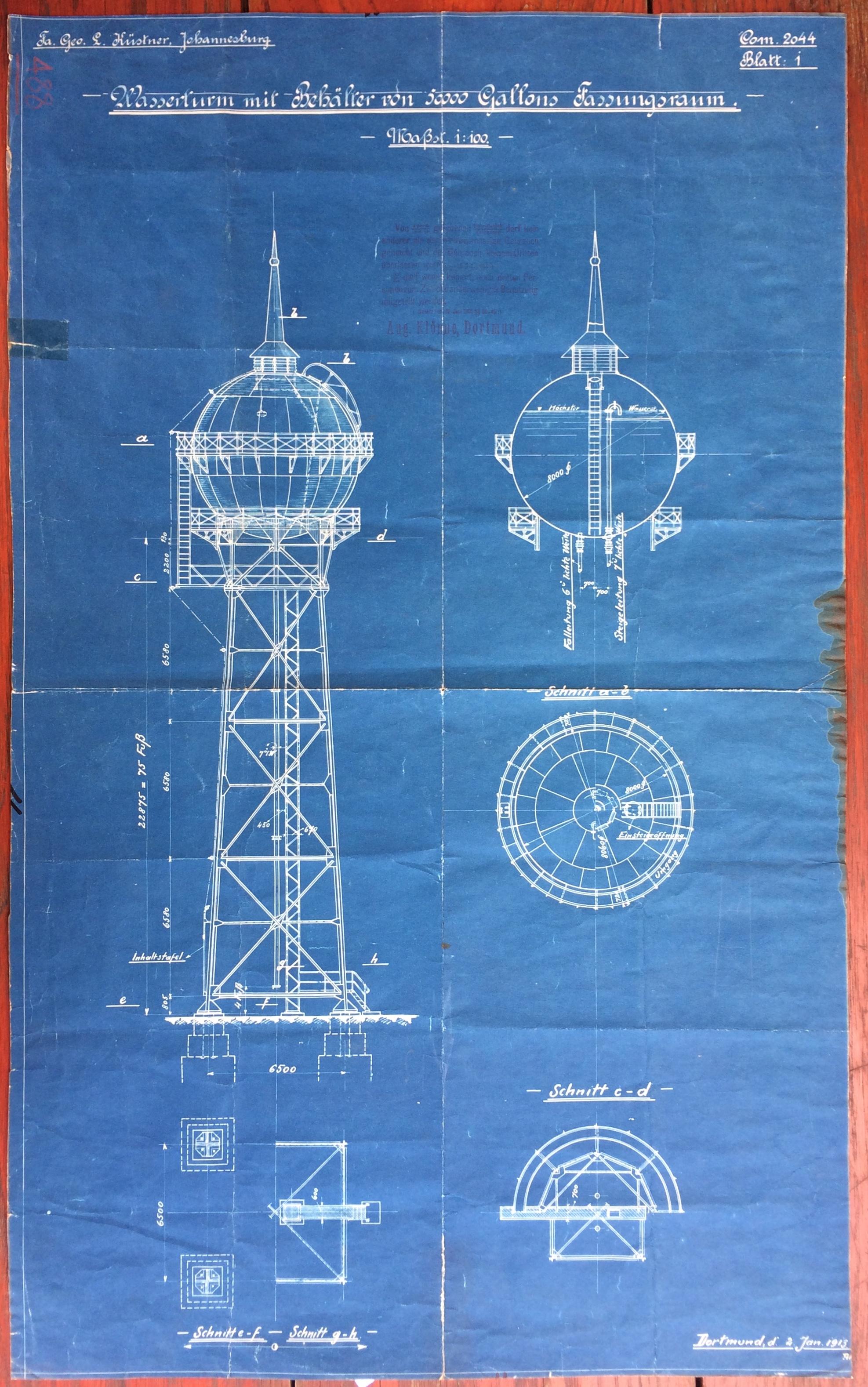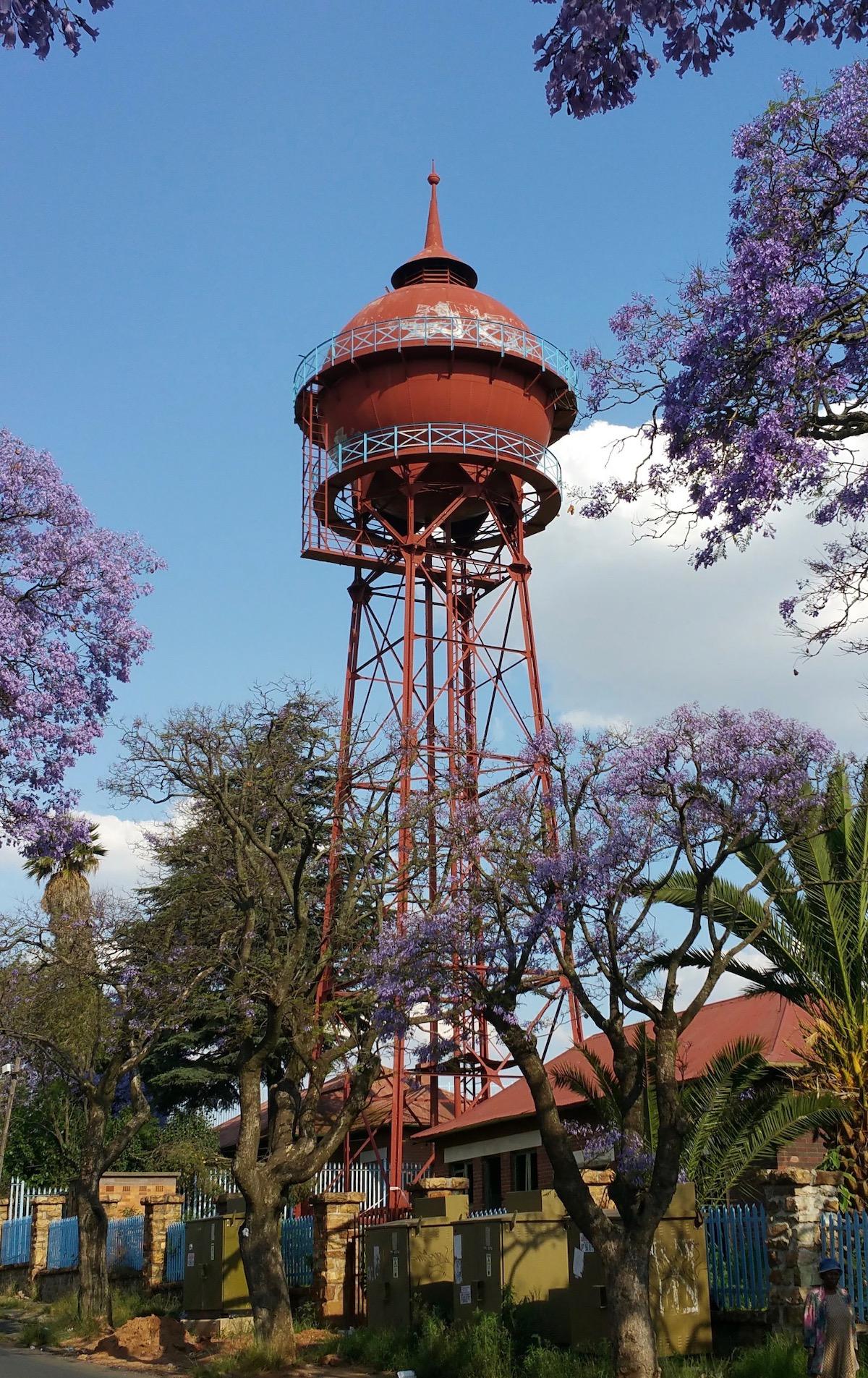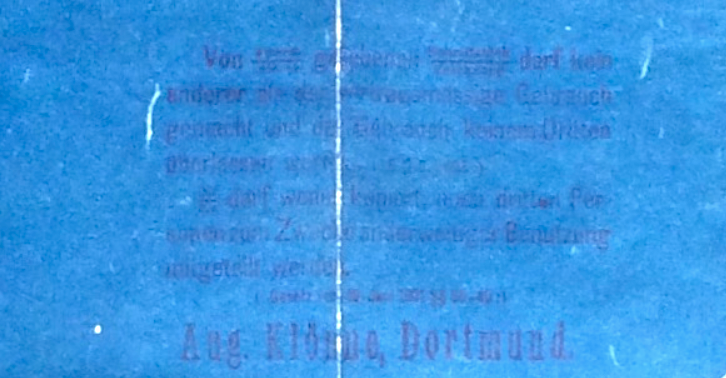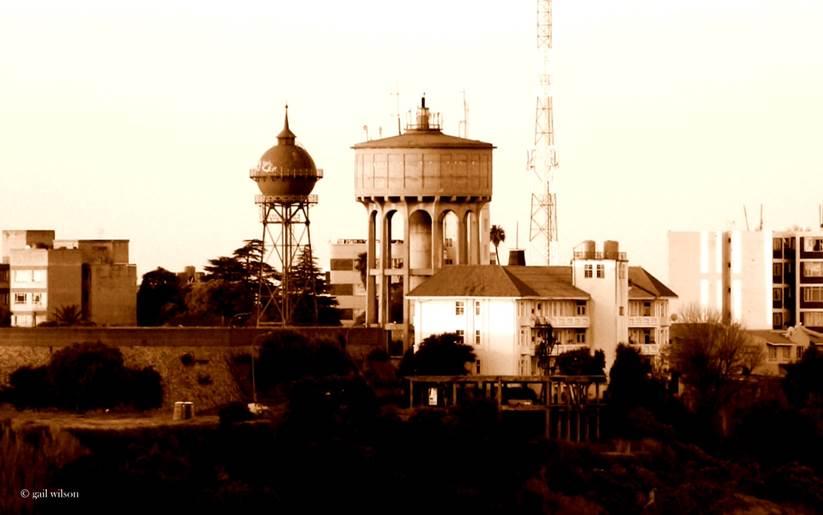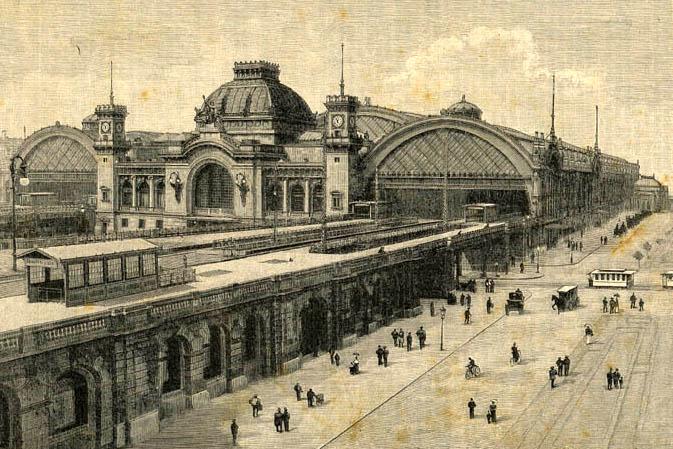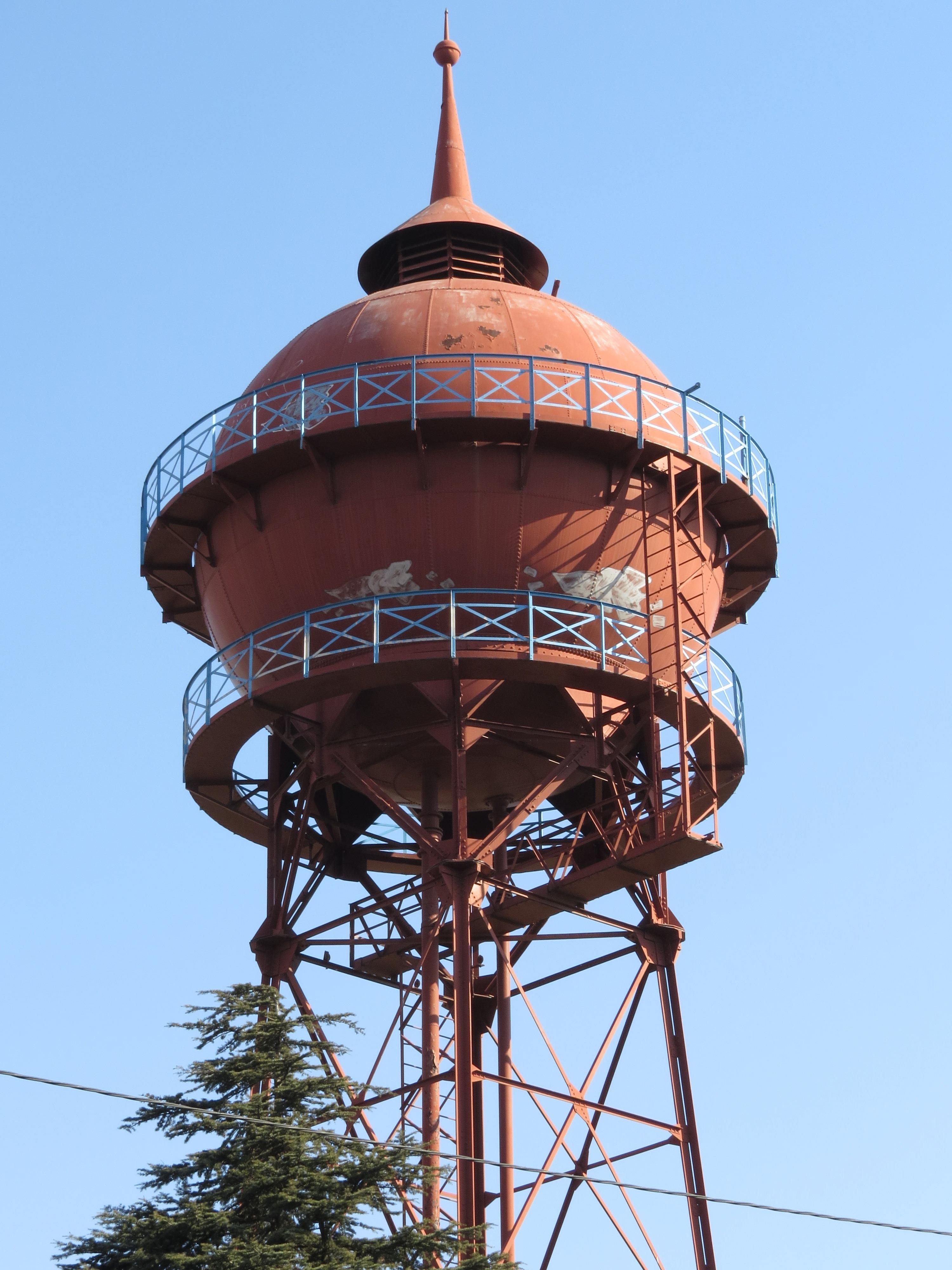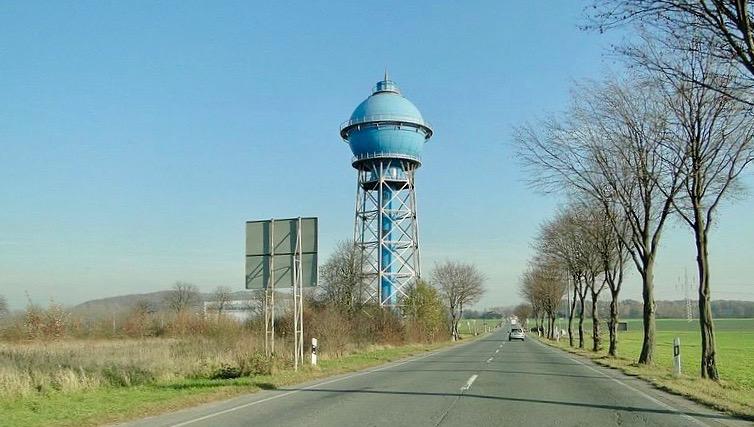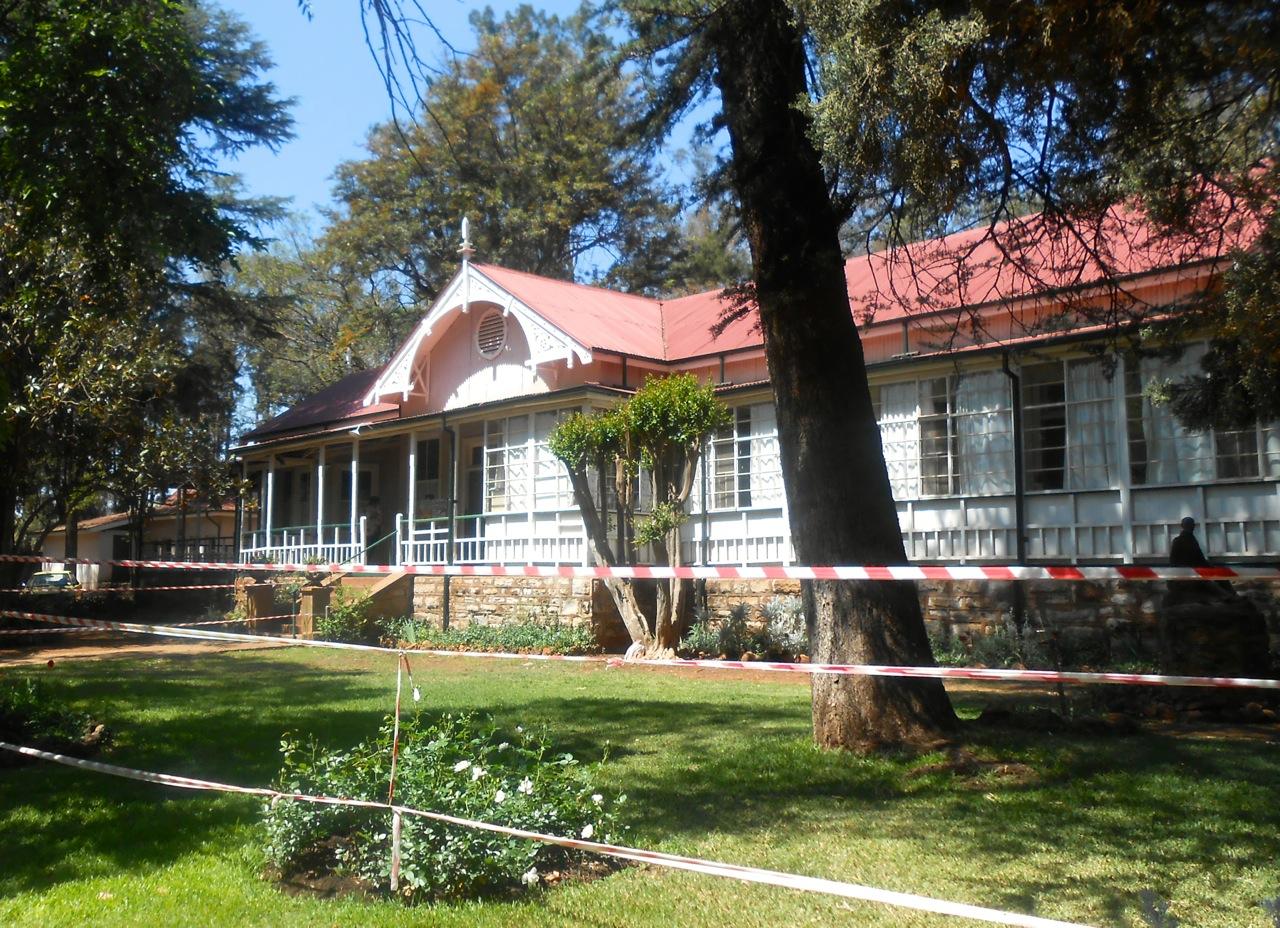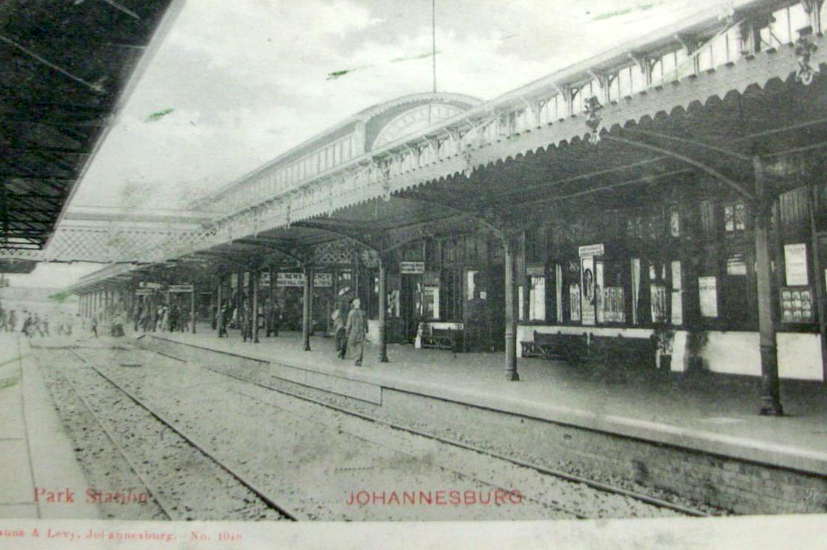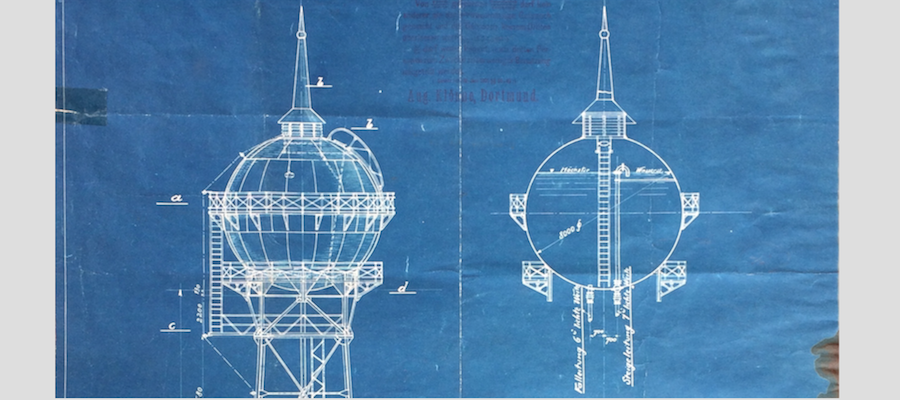
Disclaimer: Any views expressed by individuals and organisations are their own and do not in any way represent the views of The Heritage Portal. If you find any mistakes or historical inaccuracies, please contact the editor.
Below is Part 2 of Kathy Munro's wonderful series on the Yeoville Water Tower (click here to view series index). The piece takes an in-depth look at the historic blueprint and reveals the secrets of the water tower's origins. The article first appeared in the December 2018 issue of Architecture SA. Thank you to Paul Kotze for giving us permission to publish and to Gail Wilson for the use of some of her magnificent photographs.
It is literally an architectural “blueprint” or technical drawing. Firstly, there is a heading in German, Wasserturm mit Behälter von 50,000 gallons Fassungsraum (translation: Water tower with the capacity of 50 000 gallons). This pinpoints the German origin. We are able to date the tower with accuracy, as there is a date and place in the bottom right-hand corner – “Dortmund, d 2nd Januar 1913”.
The top right-hand corner states Com [commission no] 2044) Blatt 1 [page 1]. We can assume that this was a commission and the first page of technical drawings. On the top left- hand corner is the name Fa. Geo L Kűstner, Johannesburg. Thus, there is a link to a Johannesburg man and to the tender mentioned in the annual reports of the Town Engineer.
Yeoville Water Tower Blueprint (click here to view full image)
Fa. Is the German abbreviation for “firma” or firm. Mr. Geo L. Küstner (Pty) Ltd, was was a pioneering Johannesburg firm established in 1896. It specialized in the importation of machine tools, engineering and electrical supplies. Kűstner, the founder, came from Heidelberg in Germany. As a young man he took up a position with a firm of merchants in London. He became the representative of a number of overseas manufacturers following his arrival in Johannesburg. Kustner left South Africa during the Anglo-Boer (South African War) and went to Australia where he investigated business prospects but returned to South Africa with his wife and young son in 1902. He re-established his business in Johannesburg, purchased a stand and built premises at the corner of Marshall and Ferreira Streets. The firm specialized in the importation of water softening and purification plants, structural steel works, miner’s carbide and hand lamps and cyanide and mercury for the Witwatersrand gold mines. In 1912 this firm secured the Johannesburg municipality tender for the supply of the Yeoville steel water tower.
Yeoville Water Tower (The Heritage Portal)
A thumbnail history of the firm appears as an advertorial in Mr. Felix Stark’s Seventy Golden Years (the History of Johannesburg up to 1956). After the First World War with the development of local industry, the firm adapted to changing times and in 1920 added machine tools and engineering and electrical supplies to its range of imported commodities. Kustner died in 1923 and the business was taken over by his son Mr. Robert V. Kustner. A 1928 advertisement for the firm, reveals that the firm represented at least ten German engineering firms on the Witwatersrand, firms such as Watt and Schuchardt & Schutte of Berlin, Naxos-Union and Gůnther & Co of Frankfurt am Main, Bochsling- Buderus of Welzlar, Weipert of Heilbronn, Pohlig and Reisert of Koln, in addition to A. Klőnne of Dortmund. A specialist range of mining equipment such as precision tools, cable cars, scientific instruments, lamps, crucibles, abrasive sheets, grinding wheels were among the listed items handled by Kustner.
There is record of the registration of Mr. Geo. L Kustner as a Pty. Limited company in 1936. The South African Mining Yearbook (1941/42), displays an advert for Kustner as a specialist supplier of mining material, engineering and electrical supplies and listed as importers of high-class machine tools. Mr. Robert V. Kustner was the managing director and their offices were located in Marshall Street, Johannesburg. However, in 1950 the Company relocated to a new building in Central road Fordsburg.
The next interesting feature of the Blueprint is a faint stamp in red lettering, appearing below the heading, and hardly visible and mainly illegible. Under a high-powered light it is possible to make out enough of the words (in German) to arrive at a meaning and this translates as: “Of (illegible) nobody but the contractual user may make use. It may not be passed on to third parties nor copied nor communicated to third parties for further use”. It is a claim of ownership or design copyright by the firm. The name Aug. Klönne, Dortmund signs off this declaration. This became the starting point in the quest for origins.
The faint stamp
The Blueprint comprises five structural engineering drawings with an outline of the plan of the tower and various cross sections of technical details. These drawings are of the elegant high-rising steel framework, the circular substantial iron support framework supporting a walkway, the spherical tank is capped by the almost Gothic-looking steeple adornment reaching skywards (it is a ventilator). The information it provides is consistent with our knowledge that the Yeoville Water Tower was completed in 1914. To give our tower its correct period, it belongs to the reign of George V, or more correctly still, the reign of Kaiser Wilhelm II. It was neither Victorian nor Edwardian as it has hitherto been described.
The significance of the Blueprint.
This is Johannesburg’s "Wasserturm" (or Water Tower). It is an exciting moment to see a loved city landmark given its historic document of origins. This is the hard evidence that removes at least some of the guesswork. The Blueprint is important because it links Yeoville and Johannesburg to the world of German cutting-edge industrial design on the eve of the First World War, and it signals that Johannesburg had achieved a measure of sophistication and technological advancement as a town of some permanence. It was not though until 1928 that Johannesburg achieved city status. The Blueprint is essentially the ‘birth certificate’ of the Yeoville Water Tower!
Iconic shot of the Yeoville Water Tower and its neighbours (Gail Wilson)
The Yeoville Water Tower in an international context.
The Blueprint started a quest to find August Klönne and to ask whether there were other “Yeoville water towers” elsewhere, probably in Germany. Internet research was rewarding, as a community of water tower enthusiasts in Europe was discovered. There are friends of old water towers in Sweden, Britain and Germany. Water towers are regarded as items of industrial archaeology and as in the case of railway enthusiasts, there are people who document, conserve, preserve and publicise water towers wherever they still exist. A pre-WW1 water tower in good condition and still functioning is a rare architectural and engineering legacy.
Aug. Klönne: The Man and the Company.
Aug. Klönne was a German engineering firm established in 1879 by a remarkable German businessman, inventor and entrepreneur, Mr. August Klönne. Klönne was born in 1849 in Műlsborn (now Meschede), North-Rhine, Westphalia, Germany. His life spanned a Germany that came of age as a powerful European industrialised country. Klönne was a civil engineer, and his initial specialisation was in gas (from coal) furnace production. Klönne was a self-made man who started as an apprentice from modest but enterprising beginnings. As a young man he was employed by the Bochum gasworks and success led to his being commissioned to design and build a new gas station in Bochum. By the age of 24, in 1873, he was appointed to the board of the gas and water works company in Dortmund. He rose to the top to become a formidable and respected businessman involved in engineering, industry, brewing, and banking.
Klönne’s home town was Dortmund in the industrial heartland of Germany, in the Ruhr Valley. The Ruhr Valley was where Germany’s 19th century industrial revolution based on coal, iron, steam power and gas was anchored. These were the sinews of heavy industry and the foundation of modernisation and an overwhelming European dominance that rivalled and began to overtake the industrial might of Britain by the late 19th century. Aug. Klönne was one of the great German industrial giants that stood alongside firms such as Krupp, Siemens and Thyssen.
Men such as Klönne shaped the German industrial towns and cities with waterworks, gas works, steel plants, railway stations, bridges, textile mills and beer brewing. It was the need for iron components in the construction of the Dortmund gas works that led Klönne to start his own engineering workshop, buying up the workshops of the Dortmander Bridge Construction Stock Company in 1886. Out of these small beginnings the internationally renowned firm of Aug. Klönne emerged. Mr. August Klönne extended the production capabilities of his company to include gas tanks, water tanks, railway bridges, station sheds, locks, weirs and ship lifts. Internet research yielded information about a gas production patent registered in the 1880s in the USA, and Europe for the washing and purification of gas. Significantly the use of patents was a method to promote and exploit technically important inventions. The great 19th century railway stations with their steel trusses and arches were the masterpieces of the age. The Klönne firm, for example, supplied the steelwork for the new imposing main station of Dresden which opened in 1898 (damaged in the Allied bombing raid of 1945).
Old postcard of Dresden Station
The high-level water tank business grew out of a combination of the specialisation in gas tanks and steel structures. In co-operation with other engineers, such as Mr. Georg Barkhuizen, he constructed the first above-ground gas ring container. Later high water tanks were developed. Klönne became the sole manufacturer of the Barkhuizen water containers in the late 19th century and it was the dominant design, because of its functionality and excellence. Further research then resulted in the award of a patent to Klönne in 1898 for an improved spherical water container. From 1906, the spherical design became the standard Klönne type. These spherical water tanks were prefabricated in Dortmund and dispatched for construction in Germany and abroad.
Close-up of the spherical design of the Yeoville Water Tower (Gail Wilson)
August Klönne died in Dortmund in 1908 at the age of 59. After his death the company was run by his twin sons, Mr. Max Klönne (1878-1945) and Mr. Moritz Klönne (1878-1962) and then passed to a third generation. They expanded the company's field of activity and appear to have continued erecting Klönne water towers.
Klönne’s engineering achievements extended to railway stations and platforms, railway bridges (Dresden, Essen, Burg, Dortmund), bridges over rivers (for example, the Hohenzollern bridge on the Rhine in Cologne) and factory and plant structures. Klönne shaped the physical and industrial look of Dortmund prior to World War II, constructing overpasses, bridges, the main station and its platforms. Other engineering projects included, parts of the Ruhr viaduct near Witten (1913-1916), and the Hindenburg Bridge in Halle (Salle) was also a project of those years and it was only scrapped in 2006. The company was also responsible for a double-track bridge and a 264m long railway turning bridge in Holland, one of the largest in Europe. In addition, the firm was active in the construction of mine and metallurgical plants, gas tanks, bridges, cranes, market halls, gasworks and allied facilities, and steel water structures such as ship lifts, floating docks etc. These were all major high quality, capital- intensive engineering projects.
Later, moving with the times, the firm was also responsible for airship hangers, hydroplane hangers, boat hoists, further gas containers and a motorway bridge over the Rhine at Leverkusen.
By 1958, the company Aug. Klönne employed about 1 700 employees; it prospered through three generations of family ownership and management and survived the political upheavals and wars of the 20th century. However, in 1966, Aug. Klönne was taken over by Thyssen-Röhrenwerke AG.
Der Blauer Wasserturm Ahlen (The Ruhr) - the Blue Water Tower of Ahlen - the twin of the Johannesburg Yeoville Water tower.
The nearest and closest “twin” of the Johannesburg Yeoville Water Tower is the Blue Water Tower in the city of Ahlen, on Guissener Strasse. It is a landmark of the city, built between 1915 and 1917 by Aug. Klönne. This water tower stands at a height of 44m and served the mine and mine settlement of the Zeche Westfalen and continued to be part of the public water supply system until 1985. Demolition was planned in the 1980s, but local heritage enthusiasts campaigned for its preservation and the city of Ahlen became the new owner. It was extensively refurbished and now recognised as an industrial monument. It is also celebrated as it demonstrates the application of riveting in tower construction. Similar riveting can also be seen on the Yeoville Water Tower.
The Ahlen Water Tower and the Yeoville Water Tower are excellent examples of the hemispherical shape and the design of supporting frameworks at the base and around the circumference. The “ball”, as water container, is mounted on a steel framework and represents that quality combination of excellence in industrial functionality and design.
Blue Water Tower of Ahlen (via Wiki Commons)
Prefabrication and the imported option, the Johannesburg order.
The strange thing about the Johannesburg Town Engineers’ reports, of the years 1913 to 15, is that they fail to mention that the water tank and supporting tower was imported from Germany. The Mervyn King Ridge Trail handbook (1986) indicates that the Yeoville Water Tower was made in Dortmund, transported to Johannesburg and erected on site in 1913. Hence the water tower is an example of a prefabricated form. This was not unusual in the late 19th and early 20th century prior to the establishment of an industrial capacity and the establishment of a local iron and steel industry.
We know from the work of Prof. Gilbert Herbert that cottages, churches, theatres, pubs were all shipped out in prefabricated sections to British Empire countries, Australia, New Zealand and South Africa. Kimberley has some excellent examples. Jan Smuts’ (erstwhile Prime Minister) home Doornkloof at Irene was originally an imported British officers’ mess from Middelburg, in the then Transvaal. However, Gilbert concentrated on the architectural aspects and misses the industrial archaeology and prefabrication represented by the early mine headgear of both Kimberley and the Witwatersrand.
Smuts House (The Heritage Portal)
German and Dutch interest and involvement in the economy of the Transvaal has been documented in the major studies on the NZASM railway projects and buildings by both De Jong and van der Waal and the team Bakker, Clarke and Fisher. The original Park station (first called Park Halt) was a pre-fabricated structure imported from the Netherlands and dating from 1896-7. It was designed by the Dutch architect Mr. Jacob Klinkhammer.
Old postcard of Park Station (Braune and Levy Collection)
Mine headgear and stamp batteries were required for the new mines of the Witwatersrand, and Johannesburg for example, Village Main, City Deep, Ferreira’s Mine, Crown Mines. In the early pre-railway days all heavy machinery and mine equipment had to be imported from Europe by ship and brought to the Highveld by ox-wagon. Very few of these hoists and headgear structures survive today but their visible pounding presence shaped the city’s landscape and was (and one or two still are) distinctive landmarks. It is quite possible that Aug. Klönne headgears also found their way to the Witwatersrand in pre-fabricated form; but this suggestion must await further research.
Limited edition prints of the Water Tower can be purchased from the Johannesburg Heritage Foundation (only a handful left). R400 or R500 depending on the number ordered. Email Eira - mail@joburgheritage.co.za.
Kathy Munro is an Honorary Associate Professor in the School of Architecture and Planning at the University of the Witwatersrand. She enjoyed a long career as an academic and in management at Wits University. She trained as an economic historian. She is an enthusiastic book person and has built her own somewhat eclectic book collection over 40 years. Her interests cover Africana, Johannesburg history, history, art history, travel, business and banking histories. She researches and writes on historical architecture and heritage matters and is well known for her magnificent book reviews. She is a member of the Board of the Johannesburg Heritage Foundation and is a docent at the Wits Arts Museum. She is currently working on a couple of projects on Johannesburg architects and is researching South African architects, war cemeteries and memorials.
Comments will load below. If for any reason none appear click here for some troubleshooting tips. If you would like to post a comment and need instructions click here.

